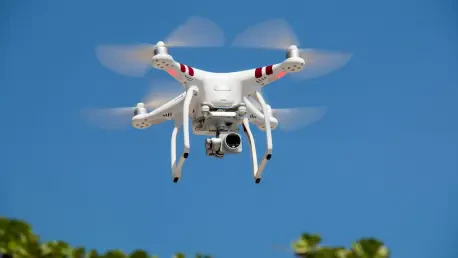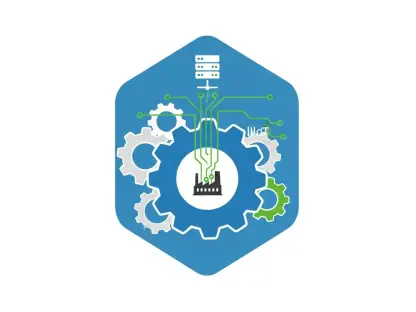In a transformative move for India’s burgeoning drone sector, recent policy updates by the GST Council have introduced a simplified tax structure for unmanned aerial vehicles (UAVs), sparking optimism across industries like agriculture, logistics, and defense, while addressing long-standing tax ambiguities that have hindered growth. This decision offers a clearer financial landscape for manufacturers and operators alike. With the drone industry already generating significant revenue and attracting substantial investments, these reforms are poised to act as a catalyst, driving innovation and adoption on a larger scale. The implications of a reduced tax burden extend beyond mere cost savings, potentially reshaping how drones are integrated into commercial and strategic frameworks. As the sector stands at a pivotal juncture, understanding the nuances of these changes reveals not only immediate benefits but also the long-term potential for positioning India as a global leader in drone technology.
Tax Reforms and Economic Impacts
Redefining GST Rates for Drones
The GST Council’s latest revisions to tax rates for drones mark a significant shift, designed to alleviate financial pressures on the industry. Commercial drones now fall under a reduced GST rate of 5%, a sharp decline from the previously inconsistent rates that ranged between 5% and 28% based on specific features like cameras. Meanwhile, military drones, along with critical components such as high-performance batteries and flight motion simulators, enjoy a complete GST exemption. This strategic move not only lowers production costs but also prioritizes sectors vital to national interests. In contrast, personal aircraft now face a steep GST hike from 28% to 40%, reflecting a clear policy focus on commercial and defense applications over luxury uses. These changes aim to streamline compliance, eliminate disputes over tax classifications, and create a more predictable environment for businesses operating in this space, setting the stage for enhanced market competitiveness.
Economic Ripple Effects on Industry Growth
Beyond immediate tax relief, the economic implications of these reforms are far-reaching for the drone industry’s trajectory. With the sector already valued at Rs 2,500 crore and bolstered by investments worth $500 million across over 600 startups, the reduced costs are expected to fuel further expansion. Lower GST rates translate into more affordable pricing for end users, potentially accelerating adoption across diverse applications like agricultural monitoring and logistics delivery. Additionally, the elimination of tax ambiguities reduces compliance burdens, allowing companies to allocate resources toward research and development rather than legal disputes. Industry leaders have noted that this creates a level playing field, removing cost disparities that previously favored some players over others. As a result, small and medium enterprises, alongside larger firms, stand to benefit from a more equitable market, fostering an ecosystem ripe for innovation and scalability.
Industry Perspectives and Future Potential
Stakeholder Optimism on Tax Rationalization
Feedback from industry stakeholders highlights a unified sense of optimism regarding the GST Council’s recent decisions on drone taxation. Leaders within the sector, such as representatives from the Drone Federation of India, have emphasized that the simplified tax structure resolves years of confusion and frustration over inconsistent rates. This clarity not only enhances operational efficiency but also boosts investor confidence, as financial predictability becomes a cornerstone of business planning. For companies like Garuda Aerospace, the exemption of GST on military drones and key components like batteries directly impacts profitability, enabling cost savings to be passed on to customers. Such benefits are seen as a stepping stone for expanding market reach, particularly in defense contracts, where pricing competitiveness is critical. The consensus is clear: these reforms are a much-needed push toward sustainable growth and operational ease.
Driving Innovation and Strategic Development
Looking ahead, the simplified tax framework is anticipated to serve as a powerful driver for technological advancement and strategic development within the drone industry. Companies like ideaForge, a prominent player in the market, have pointed out that reduced financial burdens allow for greater investment in cutting-edge solutions, from enhanced battery life to sophisticated surveillance systems. This focus on innovation is particularly crucial for defense applications, where India seeks to strengthen its capabilities through domestic manufacturing. Furthermore, the cost reductions facilitate broader adoption across sectors like agriculture, where drones can revolutionize crop monitoring and yield optimization. The government’s evident prioritization of commercial and strategic drone use over personal luxury applications signals a long-term vision to integrate UAVs into the national economic fabric, positioning the industry for global competitiveness and leadership in emerging technologies.
Reflecting on a Policy Milestone
As the dust settles on the GST Council’s groundbreaking decision to streamline tax rates for drones, it becomes evident that a new chapter has been written for India’s UAV sector. The implementation of a 5% GST on commercial drones and exemptions for military and critical components addresses past compliance hurdles with remarkable precision. Industry stakeholders have celebrated the clarity and cost reductions, recognizing how these measures have alleviated operational strains and paved the way for enhanced profitability. The strategic focus on prioritizing commercial and defense applications over personal use underscores a deliberate policy direction. Looking back, these reforms stand as a testament to balancing economic incentives with national priorities. Moving forward, the emphasis should remain on sustaining this momentum through continued policy support, encouraging public-private partnerships, and investing in skill development to ensure the workforce is equipped for an increasingly tech-driven future.









